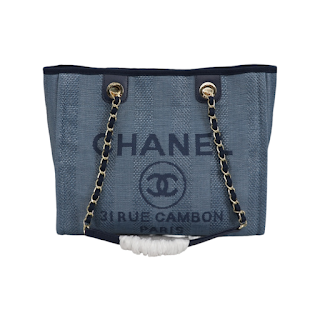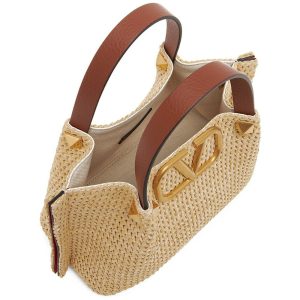The Be Roma Bag by Versace: When Luxury Meets Ethical Dilemmas
In the labyrinth of luxury fashion, Versace has long been a Medusa, mesmerizing onlookers with its mythical allure and often inciting controversy. The Be Roma bag, a recent addition to Versace’s iconic line, has found itself at the heart of a debate that intertwines the threads of artistry, ethics, and desire. Join me in an exploration of this enigmatic accessory and the wider discussions it reflects in the world of couture and consumer choices.
The Allure of Versace: A Brief History
Versace does not just sell fashion; it sells flamboyant confidence laced in opulence. Founded in 1978 by Gianni Versace, the brand swiftly became synonymous with vibrant prints, audacious cuts, and a sex appeal that was as inescapable as it was alluring. The maison is woven into the very fabric of the fashion zeitgeist, memorialized not only in wardrobes but also in museum archives. Its founder's untimely passing only served to cement Versace’s status, as it continued to push boundaries under the stewardship of his sister, Donatella.
The Gold Standard of Luxury
Central to the Versace ethos is a celebration of the body and a boldness rarely rivaled. The brand has dressed the most revered names in every industry, from royalty to rock stars, each donning a piece that whispers the power of its golden Medusa.
Be Roma Bag: An Icon Reimagined
Enter the Be Roma bag, a descendant of a line steeped in Versace DNA. Uniting regal 90s aesthetics with the modern clamor for sustainability, this bag was a signal of Versace’s commitment to the ongoing legacy of its house. The bag is not merely an accessory; it is a cultural statement, embodying the ideals of its brand.
A Masterpiece in Miniature
Some details of the Be Roma bag are so unmistakably Versace – the vivid hues, the supple leather, and, of course, the brand's signature emblem. Versace’s design house spares no expense, and the Be Roma bag is a testament to their craftsmanship. The double-stitched leather is flawless, and the logo gleams, magnetizing the eyes of all who glance upon it.
Authenticity vs. Replication
The Be Roma bag has also found a life beyond Versace boutiques. In the bustling gray market of replicas, this bag is a coveted item, mirroring the original version in almost every nuanced detail. Yet, beneath the allure of a luxury facade, lies a veil of ethical considerations and questions of quality.
The Replication Dilemma: Ethics and Quality
With great popularity comes replication, and the Be Roma bag is no exception. The replica market is a shadow economy that capitalizes on brand appeal yet raises profound ethical questions about intellectual property and consumer integrity.
Unraveling the Ethics
The allure of a designer label at a fraction of the cost is undeniable, yet the decision to purchase a replica comes with ethical quandaries. It’s a complex issue where the line between personal choice and brand protection blurs. While some shoppers view replicas as a mode of overcoming economic barriers, it often undercuts the labor and creativity that lie at the heart of luxury craftsmanship.
The Craft and the Con
Beyond the ethical considerations, the quality of replica items is often a point of contention. The allure of luxury fashion stems from the combination of impeccable design and superior materials. The Be Roma bag, in its replication, undoubtedly sacrifices some of these qualities, leaving shoppers with a ghost of the original – enticing but never a perfect match.
Versace’s Response and the Future
Luxury brands such as Versace are not silent spectators in the war against replicas. They employ sophisticated strategies to combat the duplications, which range from legal interventions to the development of authentication protocols. Versace’s response to the replica market is particularly interesting in its multilayered approach, which seeks to educate consumers and enforce legal rights.
Authenticity Assurance and Consumer Education
One of the most promising methods Versace employs is the creation of tools and platforms to help consumers distinguish authentic products from replicas. This not only safeguards the brand's image but also fosters a sense of trust with its customer base, ultimately cultivating a loyalty that goes beyond the allure of designer labels.
A Glimpse into the Future of Luxury
The future of the luxury market is a canvas fraught with changing consumer perspectives and evolving ethical standards. As we tread the digital age, the battle against replicas intensifies, and luxury brands are faced with the challenge of preserving the sanctity of their craft while adapting to technological shifts.
Conclusion
The Be Roma bag by Versace is more than just an item; it is an emblem that sparks discussions on authenticity, quality, and ethical consumerism. It stands as a testament to the complex relationship between luxury fashion and the market it has spawned. Whether you’re a fervent aficionado of authentic luxury or a budget-conscious consumer swayed by the allure of replicas, the choices you make echo far beyond the checkout.
References and Further Reading
For those wanting to explore the topic further, the following sources provide valuable insights:
- Versace’s official documentation and statements on their approach to replica products
- Scholarly articles on ethical considerations in the luxury market
- Consumer reports and testimonies on replica product quality and consumer satisfaction
- Industry analyses on the impact of replica markets on luxury brands and the fashion industry
- Interviews with designers and brand representatives discussing the intersection of replica markets and their work




Comments
Post a Comment